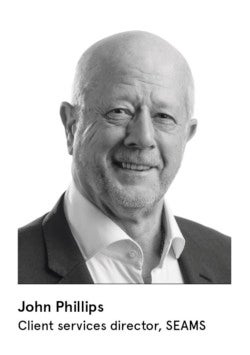 A 50-year-old water pipe is likely to be a water pipe in need of some attention. But determining the optimal investment schedule on these assets is a complex operation in any utility and requires a line of sight all the way from the boardroom to the man with the pneumatic drill.
A 50-year-old water pipe is likely to be a water pipe in need of some attention. But determining the optimal investment schedule on these assets is a complex operation in any utility and requires a line of sight all the way from the boardroom to the man with the pneumatic drill.
Utility companies have traditionally not been good at keeping that line of sight unbroken, often with too much focus on reactive maintenance and forgetting the strategic vision. Strategic decisions are made in the boardroom, but then not clearly communicated to the operations teams, so it can be years before the asset performance, or lack of it, becomes clear.
Often reactive work is completed only for another incident to occur 100 yards down the road the following week. making it impossible to determine the most efficient use of resources.
But big data and analytics are revolutionising decision-making, breaking apart the old departmental siloes and enabling companies to implement a much more effective investment management process.
“The key phrase in today’s market is ‘transparent and evidenced decision-making’,” says John Phillips, client relationship director at SEAMS – an analytics company now part of consultancy firm Arcadis – which helps asset-centric organisations make better decisions.
Pivotal to SEAMS’ work is its unique EDA – enterprise decision analytics – software, resulting from collaborative academic research at Sheffield and Exeter universities, which can optimise multiple scenarios to provide more certainty about performance outcomes.
It’s critical that we make better decisions and better use of data to create knowledge
This sophisticated modelling can help to identify optimal investment decisions to work assets harder; the analytics is both predictive and prescriptive, answering questions ranging from “what’s the risk asset X will fail in the future?” to “how can we prevent failure more efficiently?”
“It’s critical that we make better decisions and better use of data to create knowledge,” says Mr Phillips, who points to two drivers of asset investment. The first is an increasingly tough and rigorous regulatory framework, across industry sectors, which has driven companies to think in a different way about renewing or repairing infrastructure. Meeting the regulator’s demands surrounding key performance indicators has forced smarter decision-making.
 The second driver is an increasingly tight financial situation. Despite the need to spend on ageing infrastructure, governments are strapped for cash. Global investment in transport, power, water and telecoms stands at $2.5 trillion, but needs to be $3.3 trillion if we are to meet 2030 growth forecasts, according to a 2016 report from consultants McKinsey.
The second driver is an increasingly tight financial situation. Despite the need to spend on ageing infrastructure, governments are strapped for cash. Global investment in transport, power, water and telecoms stands at $2.5 trillion, but needs to be $3.3 trillion if we are to meet 2030 growth forecasts, according to a 2016 report from consultants McKinsey.
With different priorities competing for scarce resources, companies must find different ways of improving business performance, which include customer value and shareholder return.
“Our analytics and optimisations can make investments between 7 and 17 per cent more effective,” says Mr Phillips.
The EDA software developed by SEAMS can solve complex problems too big for the human brain to calculate and provide answers at a level of detail unimaginable a couple of decades ago.
Should you spend £1 billion on new assets and £1 billion on repairs? Or £0.5 billion on new and £1.5 billion on repairs? Should it be the tracks running under Piccadilly in London or those affecting the Victoria Line? If you are digging up a city road in one area, what other work could be completed at the same time? If you’ve got one department working at a particular location, could there be work for another department in the same place?
The minutiae of such decisions have previously been written off as simply impossible to achieve, but the magic of today’s modelling capabilities means that is no longer the case. With the power to model confidently the effects of variables such as weather, geography, human activity and traffic, decision-making can be optimised for the benefit of customers, consumers, shareholders and regulators alike.
The software allows organisations to differentiate between risks, balancing between acceptable and unacceptable issues, and provide the evidence to explain such decisions to investors or regulators. It is a transformative process that is fast becoming not merely nice to have, but critical to profitability and sustainability.
For more information please visit www.seamsltd.com


